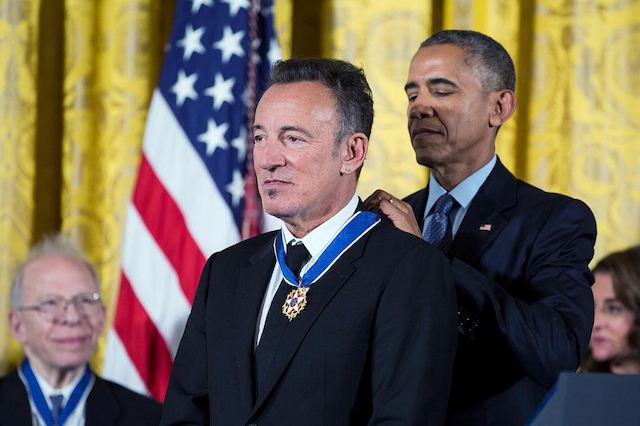Хотя Lloyd’s of London, возможно, является самой известной страховой компанией в мире и ее влияние широко известно на протяжении всей истории, на самом деле это вовсе не страховая компания. Это страховой рынок, на котором его брокеры выписывают полисы, в которых синдикаты и другие стороны (названные имена) разделяют финансовые риски различных предприятий. Родившийся в лондонской кофейне в 17 веке , он по-прежнему пропитан традициями и историей, хотя современная деловая практика сделала многие из его формальных практик если не устаревшими, то, безусловно, причудливыми.
На протяжении веков компания Lloyd’s заработала репутацию добросовестной компании, способной и готовой застраховать практически все. С 18-го века корабли отправлялись в путь, а инвесторы в их путешествиях были защищены финансовым зонтиком, предлагаемым андеррайтерами Ллойда. Знаменитый клипер«Катти Сарк» когда-то плавал под защитой Ллойда, в 20- м веке одноименная компания по производству виски использовала защиту Ллойда для другого предприятия, совершенно отличного от опасностей моря. Вот некоторые из наиболее необычных и даже причудливых предметов, застрахованных почтенным лондонским Lloyd’s, и несколько примеров того, как компания удовлетворила требования застрахованных.
10. Части тела

Мудрый мастер осознает роль своих инструментов в достижении успеха. В случае с Китом Ричардсом, гитаристом и автором песен легендарной группы The Rolling Stones, его руки являются важным инструментом в его легендарной карьере. Скрюченные, искривленные, покрытые шрамами и артритом руки Ричардса застрахованы Ллойдом, и, по словам тогдашнего президента Ллойда в Северной Америке Хэнка Уоткинса (2016), были застрахованы в течение длительного времени. Страхование частей тела, важных для успеха, не является чем-то новым. Во время Второй мировой войны актриса и танцовщица Бетти Грейбл, сменившая Риту Хейворт с поста очаровательной девушки номер один среди американских солдат и моряков, застраховала свои ноги на 1 миллион долларов. «У меня есть две причины для успеха, и я поддерживаю их обе», — сказал Грейбл.
Ирландский танцор Майкл Флэтли тоже застраховал ноги, хотя и не по тем же причинам, что и Бетти Грейбл. Ллойд покрыл риск. Они также застраховали волосы на груди певца Тома Джонсана случай, если они каким-то образом потеряются, что отрицательно скажется на его способности зарабатывать. Бетт Дэвис, которую певица Ким Карнес хвалила за глаза, вместо этого решила застраховать свою талию (21 дюйм). Давно сообщалось, что Долли Партон застраховала пару активов через Lloyd’s, хотя позже она отрицала эти претензии.Она объяснила их слухами, возникшими из-за комментариев, которые она сделала по поводу знаменитой страховки Грейбл ее ног. Том Джонс также отрицал, что его волосы на груди были застрахованы, хотя никто не знает, что это был рекламный ход.
9. Автострахование

Хотя другие страховые компании оспаривают их, Ллойд утверждает, что выдал первый полис автомобильного страхования в 1904 году. В то время застрахованный предмет описывался не как автомобиль, а как «корабль, плывущий по суше». Эта фраза использовалась для описания предмета полиса, который был идентифицирован как автомобиль. Тем не менее, согласно журналу Insurance Journal,компания Travelers Insurance продала полис автомобильного страхования доктору Трумэну Мартину из Буффало, штат Нью-Йорк, в 1898 году. В то время доктору Мартину принадлежал один из примерно 4000 «автомобилей» на американских дорогах.
Другой источник присваивает первый полис автострахования путешественникам, но утверждает, что он былвыдан в Дейтоне,штат Огайо, в 1897 году, что обеспечило владельцу автомобиля Гилберту Лумису покрытие ответственности в размере 1000 долларов. Веб-сайт путешественников утверждает, что его первый полис датирован 1897 годом, но не указывает, где и кому он был выдан. Итак, кто знает?
Компания Lloyd’s, заслуженно известная морским страхованием на рубеже 20-го века, прибегла к морскому языку в своей ранней политике, не связанной с мореходством, и в 1910 году сформировала Ассоциацию не морских страховщиков для работы на развивающихся рынках автомобильного и авиационного страхования. В 1919 году андеррайтер Ллойда Катберт Хит основал Британскую ассоциацию авиационного страхования. В 1927 году Хит написал для Ллойда политику покрытия перелета Чарльза Линдберга из Нью-Йорка в Париж. Полис ранней авиационной страховки принес бы его бенефициарам 18 тысяч долларов, если бы Линди не оказалась такой удачливой.
8. Голос Брюса Спрингстина

Являетесь ли вы поклонником Босса или нет, вы, вероятно, признаете, что его певческий голос, хотя и своеобразный, не стоит в одном ряду с великими голосами всех времен. Паваротти нет. Ни Синатра, хотя Брюс, как сообщается, является беззастенчивым поклонником своего приятеля из Джерси. Репутация Спрингстина была построена благодаря его трудолюбивой, хард-роковой группе E-Street Band и написанию песен с его сочувствием к простому человеку.
Журнал Rolling Stone назвал Спрингстина «Голосом десятилетия» в ретроспективной статье, опубликованной в ноябре 1990 года, хотя ссылались на его послание, а не на его певческий голос, который вряд ли можно было назвать сладкозвучным. Несмотря на это, голос Брюса Спрингстина был застрахован Ллойдом от возможности потери или повреждения, которые помешали бы его пению.
Босс, конечно, не единственный исполнитель, который застраховал свои голосовые связки от возможной потери певческих способностей. Род Стюарт, Боб Дилан и Мэрайя Кэри якобы застраховали свои голоса; в случае последнего она также застраховала свои ноги. Очевидно, Паваротти не покупал страховку для голоса, что странно, поскольку в молодости он продавал страховку, отчасти для того, чтобы оплачивать уроки вокала.
7. Волосы Троя Поламалу
Трой Поламалу, хотя и выходец из американского Самоа, родился и вырос не в этих территориальных владениях США, а в Южной Калифорнии и Орегоне. Он преуспел в футболе (а также в баскетболе) в старшей школе и поступил в Университет Южной Калифорнии в 1999 году. В какой-то момент во время учебы в колледже он перестал стричься. Он привлек достаточно внимания НФЛ, чтобы быть выбранным в первом раунде драфта 2003 года под 16-м номером командой «Питтсбург Стилерс».
Начиная с сезона 2003 года Поламалу привлек внимание как своей игрой на поле, так и постоянно растущей длиной его волос. Он утверждал, что не стригся с 2010 года. Его растущие волосы и известность как мощного оборонительного защитника побудили Head and Shoulders Shampoo нанять Polamalu для продвижения своего продукта на телевидении и в печатной рекламе. В 2010 году компания Proctor and Gamble, производитель продукции Head and Shoulders,застраховала волосы Поламалуна 1 миллион долларов в компании Lloyd’s.
Согласно Книге рекордов Гиннеса , сумма страховки на замки Поламалу была мировым рекордом. В 2013 году звезда футбола отказался от Head and Shoulders и одобрил конкурентоспособный продукт. Позже он вернулся, чтобы поддержать продукт Proctor and Gamble, хотя неясно, остается ли его прическа самоанского воина застрахованной Lloyd’s.
6. Алмаз Тейлора-Бертона

Во время их громких отношений, которые включали в себя два брака и развода, многочисленные публичные ссоры и более чем одного нарушителя с обеих сторон, актер Ричард Бертон прославился драгоценностями, которыми он расточал Элизабет Тейлор. Было много потрясающих произведений. В 1968 году он подарил Тейлорубриллиант весом 33+ карата,ранее принадлежавший Вере, жене сталелитейного магната Альфреда Круппа. Этот рок был для актрисы более или менее повседневной одеждой. Она носила его в виде кольца, обычно на правой руке.
Самым известным из бриллиантов, подаренных Тейлору Ричардом Бертоном, был камень, известный как бриллиант Тейлора-Бертона весом 69,42 карата, который он приобрел в 1969 году. Бертон вставил бриллиант в ожерелье, отчасти чтобы скрыть шрам Элизабет от трахеотомии. Мисс Тейлор сочла уместным надеть платье на праздновании 40-летия принцессы Монако Грейс. Она также предусмотрительно носила бриллиант Круппа, без сомнения, в честь принцессы Грейс. Бертоны застраховали мамонтовый камень через Ллойда, что добавило условий к его публичному ношению.
Lloyd’s оговорил, что бриллиант можно носить на публике только при наличии вооруженных охранников, и ограничил количество его появлений в год. Камень был застрахован на 1 миллион долларов. После приобретения бриллианта Тейлор и Бертон развелись, впоследствии снова поженились и развелись во второй раз. После второго развода Тейлор в 1979 году продала бриллиант ювелиру из Нью-Йорка.
5. Гинденбург

Немецкий дирижабль«Гинденбург» сегодня в первую очередь помнят за драматическую манеру, в которой он взорвался в Лейкхерсте, штат Нью-Джерси, в 1937 году. Это произошло на пленке, сопровождаемой безумной трансляцией, описывающей его разрушение, и с тех пор он является символом полной катастрофы. Инцидент был вдвойне ошеломляющим, потому что до этого «Гинденбург» имел репутацию надежного и удобного трансатлантического транспорта, не уступающего по комфорту океанским пароходам, но значительно более быстрого. В предыдущем году, впервые в регулярном рейсе, «Гинденбург» без происшествий совершил 10 пересечений Атлантики. Дирижабли, казалось, были готовы претендовать на значительную долю трансатлантических перевозок.
Хотя перевозки тяжелее, чем воздушные, были намного быстрее, чем дирижабли, и Pan American Airways летали на своих клипперах из Европы в Соединенные Штаты, дирижабли предлагали роскошные условия,которых не могли самолеты. Немецкая авиакомпания Zeppelin Airline Company эксплуатировала два цеппелина между Европой и Америкой до катастрофы в Гинденбурге , которая, наряду с агрессией Германии в Европе, положила конец коммерческим более легким пассажирским рейсам, чем авиаперевозки. 36 погибших в катастрофе Гинденбурга , точная причина которой так и не была установлена, были единственными жертвами эпохи трансатлантических дирижаблей.
Немцы застраховали свои операции через Lloyd’s, поскольку они следовали модели, основанной на морских операциях. Это само по себе неудивительно, учитывая многолетний опыт британской компании в области трансокеанского страхования. Несмотря на то, что ответственность за катастрофу не была установлена, Ллойд выплатил иски о гибели «Гинденбурга» на сумму почти 80 миллионов долларов в сегодняшних долларах. Копию страхового документа на десяти страницах можно увидеть в Музее пожарной охраны Нью-Йорка на Манхэттене.
4. Улыбка Америки Ферреры
Актриса Америка Феррера впервые добилась известности благодаря роли Бетти Суарес в телевизионной комедии «Дурнушка Бетти», которую она исполняла с 2006 по 2010 год. комплект брекетов. Однако Бетти была не подростком, а молодой женщиной чуть за двадцать, попавшей в ловушку своей работы в мире высокой моды.
Несмотря на ее появление в роли Бетти Суарес, а может быть, благодаря этому, Америка Феррера оказалась востребованной для рекламной кампании продукта для отбеливания зубов в 2008 году . без брекетов Бетти, а часть прибыли идет в Smiles for Success, которая поддерживает женщин, которые не могут позволить себе стоматологическую помощь. Чтобы свести к минимуму риск потерять улыбку Америки, ее застраховали на 10 миллионов долларов.
Чтобы обеспечить страховку, группа обратилась к Lloyd’s, которая застраховала улыбку актрисы, прославившейся благодаря улыбке с заметными брекетами. Страховка покрывает зубы и десны актрисы и, по сути, обеспечивает ей полное стоматологическое страхование на весь срок действия полиса. Стоматологическая страховка, в конце концов, встречается чаще, чем страховка от волос на груди, и именно связь с брекетами Уродливой Бетти больше, чем с улыбкой Америки Ферреры, делает этот полис необычным.
3. РМС Титаник

В фильме 1997 года«Титаник» автомобиль Renault играет заметную роль. Он служит местом, скажем так, временным убежищем для Роуз и Джека, пока они находятся глубоко в трюме корабля. На злосчастном судне действительно находился похожий по внешнему виду Renault , роскошная модель, известная как Type CB Coupe de Ville, принадлежавшая Уильяму Картеру. Мистер Картер пережил крушение Титаника , как и его семья, путешествовавшая с ним. Его автомобиль этого не сделал, хотя он послужил источником вдохновения и сценой для страстного отпечатка руки, когда началась вымышленная версия затопления.
Реальный г-н Картер подал иск о потере своего автомобиля в компанию White Star Lines, владельца и оператора Титаника. Они передали его своей страховой компании, которая удовлетворила претензию, как и все претензии, поданные после гибели корабля. Г-н Картер получил 5000 долларов в качестве компенсации за потерянную машину, выплаченную ему компанией Lloyd’s, которая застраховала автомобиль, застраховав судно.
White Star заплатила премию в размере примерно 7500 фунтов стерлингов (1,13 миллиона долларов на сегодняшний день), чтобы гарантировать, что Титаник и его содержимое во время его первого рейса, а риск будет распределен между несколькими его синдикатами. После катастрофы он выплатил более 1 фунта стерлингов (152 миллиона долларов), хотя выплатил, причем почти все претензии были полностью погашены в течение 30 дней после потери корабля. Скорость, с которой были выплачены претензии, является еще одним ошеломляющим фактом катастрофы Титаника , по крайней мере, если смотреть на него с точки зрения 21 -го века.
2. Землетрясение в Сан-Франциско 1906 года.

Землетрясение 1906 года в Сан-Франциско было гораздо больше, чем просто масштабным сейсмологическим событием. Землетрясение, конечно. Это также был крупный городской пожар наподобие более известного пожара в Чикаго. Это был полный развал аварийных служб, городской кризис в те дни, когда у федерального правительства не было других средств для оказания помощи, кроме использования вооруженных сил. И многие страховые компании, покрывающие ущерб в регионе, были финансово не в состоянии выполнить свои обязательства.
Даже сегодня большинство страховых полисов не покрывают ущерб от землетрясения. Но после землетрясения в Сан-Франциско в 1906 году Ллойд издал инструкции (снова Катберт Хит) своим синдикатам оплатить все требования о возмещении ущерба, причиненного землетрясениями и последующими пожарами, «независимо от условий их полисов». Многие страховые компании обанкротились, вместо того чтобы выплатить страховые возмещения. После катастрофы в Сан-Франциско Lloyd’s выплатила заявителям сумму, эквивалентную более 1 миллиарду долларов.
Конечно, называть это событие катастрофой в Сан-Франциско неправильно, поскольку землетрясение и его последствия затронули огромную территорию Соединенных Штатов от Орегона до центральной Невады и Лос-Анджелеса. Землетрясение и пожар в Сан-Франциско в 1906 году оставались крупнейшими потерями для Lloyd’s до террористических атак 11 сентября, после которых оплата требований стала значительно менее упорядоченной. Несмотря на это реакция Ллойдана террористические атаки заслужила похвалу со стороны правительственных чиновников, в том числе министра финансов США Джона Сноу, который признал: «Мы в долгу перед вами».
1. Конкурсы и награды

Катти Сарк однажды провел конкурс в 1971 году, предложив 1 миллион фунтов стерлингов тому, кто доставит (или доставит) лохнесское чудовище. Когда руководители выразили обеспокоенность тем, что им, возможно, придется фактически выплатить награду какому-нибудь бесстрашному охотнику за Несси, они обратились к Lloyd’s, чтобы покрыть награду. Ллойд согласился после указания размеров пойманного животного, установления его добросовестности через Музей естественной истории и установления, что захваченный монстр станет собственностью Ллойда. Несси остается неуловимой более пятидесяти лет спустя, срок действия конкурса давно истек.
Lloyd’s застрахован от выплаты победителям других конкурсов.Кто хочет стать миллионером заплатил брокерской компании Ллойда, чтобы покрыть главный приз в размере 1 миллиона фунтов стерлингов за оригинальную британскую версию игрового шоу. На момент начала трансляции программы в США главный приз еще ни разу не был выигран. После того, как два участника выиграли главный приз в американском эквиваленте в размере 1 миллиона долларов в течение первого сезона, брокерская группа Ллойда, Goshawk Syndicate, подала в суд, заявив, что американская версия была намеренно сделана слишком легкой для победы . Американский вариант был, по их мнению, слишком простым, чтобы брокеры могли взять на себя финансовые риски. Брокеры Ллойда шли на разумный риск, но, очевидно, не видели в этом смысла глупости.
В качестве примера менее сложного характера вопросов в американской версии программы Daily Telegraph опубликовала образцы вопросов, в том числе из американской программы: «Какая приправа также известна как латинский танец: горчица, майонез, приправа или сальса?» Цитируемый вопрос из британской версии звучал так: «Что такое единица СИ для плотности магнитного потока?» Для тех кому нужны ответы это соответственно сальса и тесла. Возможно, синдикат Ллойда был прав.
📚 Не пропустите интересную информацию:
-
10 достопримечательностей Ярославля, которые можно увидеть за один день на автомобиле
Ярославль… Знаете, это один из тех городов, в который хочется возвращаться. Не знаю, как это объяснить, но он словно затягивает. Тут такая смесь, такая дикая,... -
15 достопримечательностей в Стамбуле, чтобы провести время с семьей и детьми
После закрытия школ у детей действительно появляется много свободного времени во время каникул. Так проводят ли они это свободное время с максимальной пользой? Если вы... -
Что такое оливковое масло из выжимок, которое в последнее время стало предметом обсуждения, каковы его преимущества и недостатки?
Оливковое масло — продукт, рекомендуемый многими экспертами и признанный полезным для здоровья человека. Однако следует отметить, что этот продукт, который является незаменимой частью нашего стола... -
10 захватывающих мест Рима: популярные достопримечательности
Рим — город, который не просто старый, а пропитанный историей насквозь, как хороший итальянский хлеб оливковым маслом. Тысячи лет назад он был центром могучей империи,... -
10 утерянных исторических предметов, которые никогда не будут найдены
Культурные и исторические артефакты являются важной частью истории человеческой цивилизации, поскольку они дают редкие проблески разных периодов времени и культур из нашей общей истории. К...






